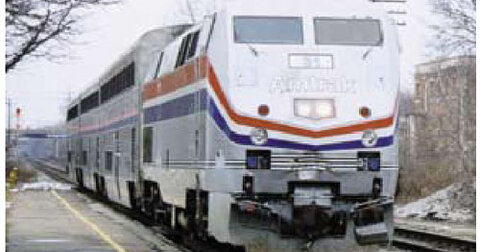Study on Ann Arbor-to-Traverse City railway rests on flimsy data
Yet it’s the foundation for $2.3 million in taxpayer funds for a second-phase study
A project promoted by environmental activists to create a railway from Ann Arbor to Traverse City has recently gained $2.3 million in state and federal funds for a phase II feasibility study. An earlier study, conducted in 2018 for the Groundwork Center for Resilient Communities, launched the proposal. The environmental group says public transportation systems are needed to curb climate change.
The 2018 study, conducted by Transportation Economics Systems, included overly optimistic numbers for passenger traffic, based on Amtrak and other passenger railway data.
Sen. Wayne Schmidt, R-Traverse City, chair of the Michigan Senate Appropriations Subcommittee on Transportation, announced on July 1 that the new state budget allocated $1 million to fund a new study. The project will also get $1.3 million in federal funds, according to the U.S. Department of Transportation, which announced grants to 166 projects across the nation.
Questions remain about the accuracy of the 2018 study, with its use of Amtrak data a key question mark. Amtrak’s rail between Detroit, population 672,351, and Chicago, population 2,690,000, carried 501,124 passengers in 2019, Amtrak said in a recent document.
Only five of Amtrak’s 48 lines in the U.S. cover their operating costs thus far in 2022, according to an Amtrak performance report from June. No lines in Michigan are among them.
Amtrak receives federal subsidies, and when the federal government has cut those subsidies in the past, the state has used dollars taxed from Michigan residents. The state of Michigan spent $150 million in 2012 to purchase the Dearborn-to-Kalamazoo segment of an Amtrak line known as the Wolverine corridor, the rail company noted in a May 2020 fact sheet. Michigan Capitol Confidential reported in 2015 that state government here has spent $24.6 million in a single year to help the struggling public transportation system.
The 2018 study does not cite the sources for its projections, except for the executive summary of a report the Anderson Economic Group conducted for the Traverse City Tourism Corporation.
The Groundwater Center’s report gives estimates of passenger traffic for an Ann Arbor-to-Traverse City line for 2030, 2040 and 2050. But it offers no clues of how they were calculated.
The study includes numbers for all visitors to Traverse City and Petoskey and apparently converts those visitors into rail passengers, regardless of whether they would be likely to use the rail line or even if they live near one of its stations.
The study reads:
The key reason for travel between Southern Michigan and Northern Michigan is tourism. As a result, a special analysis was made of the level of tourism and its likely future growth. To develop the analysis, data was derived from both Traverse City and Petoskey tourist databases. ... Exhibit 3-16 presents the current annual number of visitors in these two areas. As it can be seen, the Traverse City area alone attracts about 3.8 million visitors per year, and Petoskey area attracts another 2.5 million passengers. Therefore, it is estimated that overall over 6 million passengers visit these areas annually.
The study includes no mention of ticket prices, and the nonprofit says on its website that ticket prices have not yet been determined. Ticket prices, along the number of passengers, determine how close to break-even a transit project will come.
The Groundwork Center did not respond to a request for the data used in the report.
Sen. Schmidt did not respond to a request for comment.
Michigan Capitol Confidential is the news source produced by the Mackinac Center for Public Policy. Michigan Capitol Confidential reports with a free-market news perspective.

